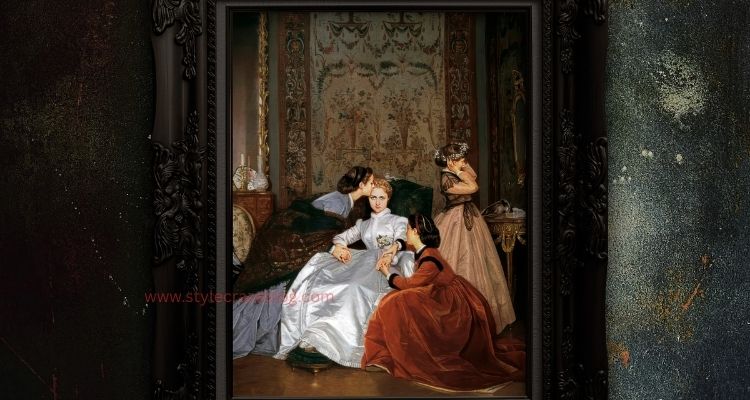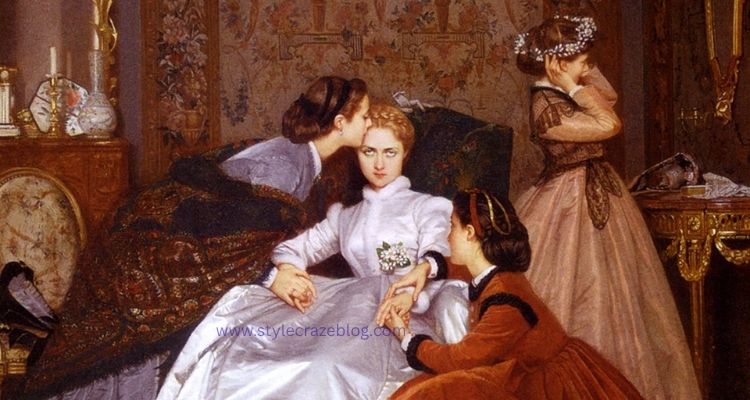When I first saw The Reluctant Bride painting, I was struck by its quiet storytelling. Painted by French artist Auguste Toulmouche, it captures a young bride hesitant about her marriage. The scene feels intimate, dramatic, and timeless. What makes this work so fascinating is not just the bride’s expression, but the story it tells about society, tradition, and individual choice.
Where Is The Reluctant Bride Painting?
For many people curious about where is The Reluctant Bride painting, the answer points to a private collection and museum displays over the years. This famous canvas is often studied as part of 19th-century French salon art. While you may find reproductions or The Reluctant Bride painting HD versions online, original viewings are rarer. Museums that feature Toulmouche’s work, like the Musée d’Orsay in Paris, often highlight pieces from the same series.
I remember visiting an exhibition on French Romantic art. Even though that particular Toulmouche piece wasn’t on display, seeing paintings from the same era instantly recalled the same atmosphere—lavish interiors, rich fabrics, and pensive expressions.
What Is the Meaning of The Reluctant Bride Painting?
The Reluctant Bride painting meaning reflects a deeper narrative about marriage and society in 19th-century France. The bride, dressed beautifully in satin and lace, looks withdrawn, as if resisting a path she had no choice in. Unlike bridal portraits that celebrate joy, this one emphasizes doubt.
For me, the strength of this painting lies in its subtle rebellion. It shows how art can critique tradition while still looking graceful. That tension—beauty with discomfort—is why the painting stays powerful.
Who Is The Reluctant Bride?
So, who exactly is the bride in The Reluctant Bride painting? She isn’t a specific known figure. Instead, she represents many young women of the era caught between personal will and family expectations. Toulmouche created several “femme d’intérieur” works—portraits of women in luxurious domestic settings, often lost in thought.
The bride here could be anyone. She could represent the universal feeling of hesitation before a life-changing event. The expression on her face keeps the mystery alive.
What Is Toulmouche Best Known for Painting?
Auguste Toulmouche gained fame in the 19th century for painting elegant women in finely detailed interiors. He belonged to a group often called genre painters. His attention to fabric, fashion, and body language made his works extremely popular at the Paris Salon exhibitions.
He is best known for sophisticated scenes of upper-class women. Works like The Reluctant Bride painting showcase his gift: combining fashion detail with emotional storytelling. I once compared his brushwork against Jean-Auguste-Dominique Ingres, and realized how Toulmouche chose intimacy over grandeur.
Are Toulmouche Paintings Valuable?
Yes, Toulmouche’s works remain valuable today. While he was not considered part of the avant-garde movement like Manet or Monet, collectors love his paintings for their elegance and narrative charm. Pieces like The Reluctant Bride painting capture social history alongside beauty.
Auction houses and museums prize works that highlight his mastery of fabric and emotion. The value often comes not only from the name but also from the vivid detailing he put into gowns, gestures, and interiors.
The day I saw a Toulmouche piece fetch a high bid at an art auction live-stream, I realized just how much people still treasure his style. These works continue to hold cultural and historical value.
Final Thoughts
The power of The Reluctant Bride painting lies in its quiet honesty. While sumptuous in detail, it does not celebrate tradition blindly. Instead, it shows the human side of marriage dilemmas in 19th-century France. Toulmouche gives us not just a scene but an emotion shared across centuries.
Whenever I revisit this artwork—whether in books, an exhibition, or an HD reproduction—I feel connected to that bride. Her hesitation still resonates today, reminding us that art speaks of universal truths.




